
Remember the first time you tackled a steep hill climb off-road? I do … and I was petrified.
I was in my mate Beddo’s short-wheelbase Series II Land Rover and the climb in front of us seemed impossibly steep. He showed me how to engage low-range four-wheel drive by pulling back on the red lever, and then told me to select second gear.
As I eased out the clutch, the little Landy leapt forward, surprising me with its low gearing, and it climbed that steep hill like a mountain goat, with me giggling nervously behind the steering wheel the whole way up.
The key to safely and successfully tackling any steep incline is to have a mechanical understanding of your 4x4 and how to best operate it, as well as to understand the characteristics of the hill climb itself.
That mechanical understanding can be as basic as whether the vehicle has a manual or automatic transmission, or a single- or dual-range transfer case, or whether it is a part-time four-wheel drive with manual or auto free-wheeling hubs, or a full-time four-wheel drive with a locking centre diff.
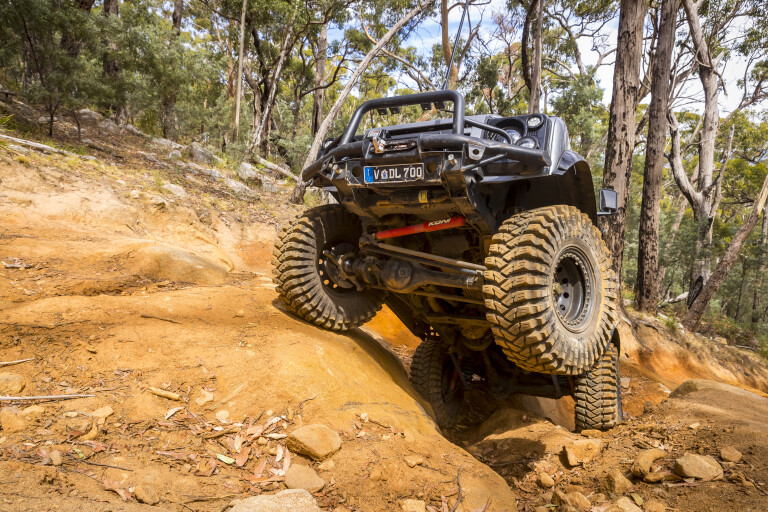
It’s also important to know what kind of mechanical and/or electronic traction aids it’s armed with, and you should be aware of the available ground clearance, and understand how approach, departure and ramp-over angles will affect the vehicle’s capability, as well as what type of suspension it has and what tyres it’s fitted with.
When it comes to understanding the terrain, you need to know much more than how steep the hill climb is, including what the surface consists of, how much (or how little) traction is available, whether there are deep ruts or other obstacles, whether there are other hazards about, and whether there is somewhere safe to stop or turn around if you need to. You should also be aware of suitable anchor points, such as big trees in case your initial attempt at the hill climb is unsuccessful and you need to use a winch.
The best way to gauge what’s ahead of you on the track is to get out of your vehicle and walk it. Of course, you’re not going to do this for every steep hill climb you come across; but in the case of extreme climbs, it’s always best to err on the side of caution and have a look first.
While you’re looking, keep an eye out for obstacles and hazards, and cast your eyes beyond the track itself; if, for example, you’re on the saddle of a mountain range, be wary of off-camber sections of the track and long drop-offs on either side.
Tyre pressures
As with just about all off-road driving scenarios, setting the correct tyre pressures is critical for success when climbing steep hills.

The right pressure will depend on the vehicle, the tyres being run and the terrain type being tackled, but as a general rule, if you’re running light truck (LT) construction tyres and you drop pressures to around 22psi for steep rocky climbs or muddy hills, you will have a lot more traction available to you than if you run road pressures of 35psi or more.
For more details on setting the correct tyre pressures for different off-road terrain types, read the 4X4 Australia ‘How to select correct tyre pressures’ guide.
Get the set-up right
Choosing the right vehicle settings for any steep climb is vitally important to success. If you drive an old-school part-time 4x4 with manually locking hubs, before you tackle a steep hill climb, you’ll need to lock the hubs, engage low range and (depending on the overall gearing of the vehicle) select second gear.
Why not first gear low-range? If overall gearing is too low, you can end up with unwanted wheelspin and a loss of traction, so you’re better off selecting second gear low-range, which will hopefully provide low enough gearing that you can safely and smoothly tackle the incline without the engine stalling. If the hill is exceptionally steep, however, you may have to select first gear low-range to make it up, in which case you should go easy enough on the throttle that you don’t end up spinning the wheels.
If you drive an auto 4x4, you can simply select low-range and Drive for steep hill climbs and rely on the transmission to choose the best gear for you. Keep in mind, however, that if the transmission suddenly drops down to first gear at an inopportune time, you could still end up with unwanted wheelspin.
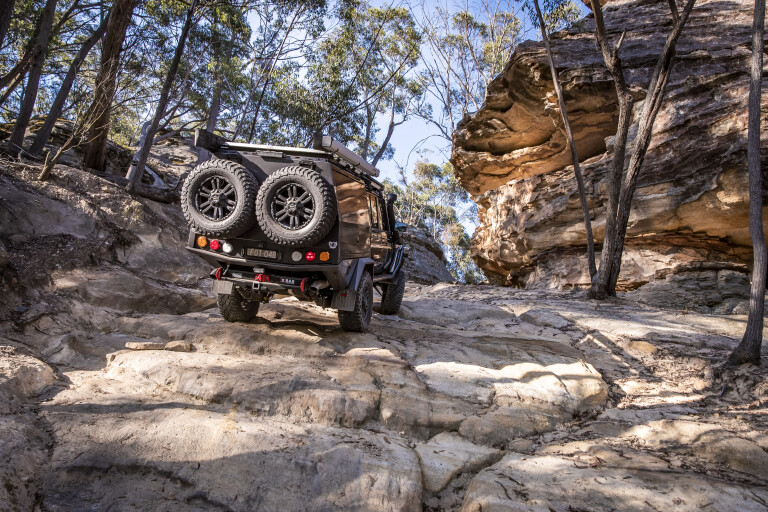
Some modern automatic transmissions have a second gear-start function that locks out first gear, enabling the vehicle to accelerate gradually on slippery surfaces such as ice without unwanted wheelspin; this first-gear lock-out also works well on steep inclines. Another option with some autos is to use the manual-shift function to select second gear which, depending on the transmission, should prevent it dropping down to first gear.
Many modern computer-controlled automatic transmissions work in harmony with other vehicle systems like electronic traction control, and with Drive selected they will select the most appropriate gear for the hill climb and minimise the risk of unwanted wheel spin.
For those with a full-time 4x4 vehicle, ensure the centre diff is locked before you set off; this will ensure equal drive is apportioned between front and rear axles. Likewise, if you have across-axle diff locks, engaging these for steep climbs with deep ruts will prevent unwanted wheelspin if you lift a wheel in the air, but bear in mind that locking the front diff will make it more difficult to steer the vehicle, so if there are tight turns on the hill climb get ready to disengage the front locker if needed.
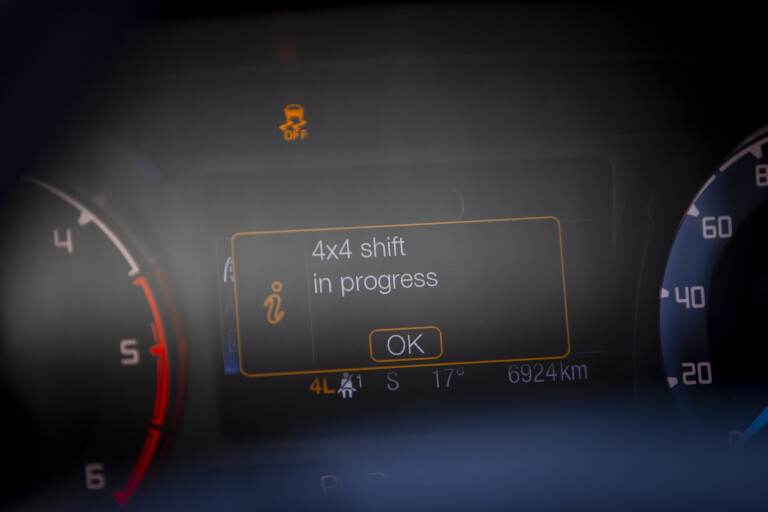
For those with modern 4x4s equipped with driver-selectable off-road modes, make sure you select the appropriate mode for the conditions ahead of you. If the steep climb is muddy and full of ruts, select the ‘Mud & Ruts’ mode, or whatever the equivalent mode is in your specific vehicle model, or if it’s a rocky climb select ‘Rock’ mode or equivalent.
The different off-road mode settings tailor the way in which the vehicle behaves to suit different terrain types and, depending on the vehicle, these modes alter throttle response, power delivery, transmission response, traction-control sensitivity and various other parameters, so it really pays to set the mode to match the terrain.
Tackling the climb
With the track ahead surveyed and the vehicle set up to tackle the hill climb, you’re ready to go. In a convoy, wait for the preceding vehicle to clear the track before setting off in case it becomes stuck or has to reverse down the hill for another attempt. And watch the vehicle ahead as it makes the climb; if successful, you could follow in its tracks, but if it becomes stuck, you’ll know what part of the track to avoid.
As you begin the climb, build up enough speed to maintain momentum as you climb over track irregularities and, in the case of manual vehicles, not stall the engine, but don’t go so fast or you could damage the vehicle. If you think you’re going too fast for the selected gear, make a quick upshift, but try to do so where the track is not at its steepest, and be ready to downshift if the engine starts to labour.
As you tackle the climb, you’ll need to adjust the steering angle and speed to suit changing track conditions. If not too deep, follow existing wheel ruts; if they’re deep and you think you might run out of ground clearance, straddle the ruts, but be careful if the ground is slippery as you could slide in to the ruts anyway.
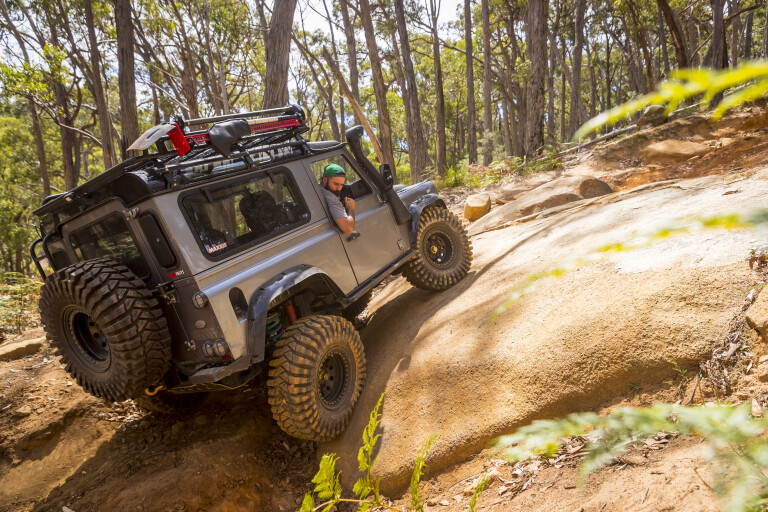
Sometimes you won’t be able to see what’s ahead, such as when climbing obstacles or cresting drainage mounds, so take it easy in case there’s a steep drop on the other side. On a positive note, drainage mounds on long steep climbs, such as those in alpine regions, can offer a chance for a rest stop … but be sure not to block the track if driving in a convoy with vehicles coming up behind, and, if you do stop, alert other vehicles via the UHF, letting them know where you’ve stopped and on what side of the track.
On steep sections or climbing obstacles, always try to keep the vehicle pointed straight up the track; and if traversing sideways across an incline, you could get in strife or even a rollover. What goes up must come down, and on most steep climbs there’s always a chance of facing oncoming traffic. Mostly, the vehicle climbing should give way to those descending, because going down a steep, slippery track you won’t often be able to pull up safely. Always look well-ahead for oncoming vehicles and for wider parts of track where it will be safe to pass.
If you don't make it
Occasionally you might tackle a difficult hill climb that you won’t safely ascend on the first attempt, in which case you’ll come to a stop. If you’re in a convoy, alert following vehicles to your predicament, and advise that they await further instruction/information (tell them to ‘standby’) while you assess the situation.
If you stall a manual transmission 4x4 on a steep climb, and you need to back up; with the engine off select reverse (low range), let out the clutch, take your foot off the brake (the vehicle will not roll as it’s in gear) and, when you’re ready, turn on the ignition; the engine will fire up and the vehicle will then commence a controlled descent in reverse gear.
Regardless of the vehicle you are driving (manual or auto), if you need to reverse down a steep hill, use the vehicle’s engine braking to keep speed in check rather than relying solely on the brakes. Most of the vehicle’s weight will be on the rear wheels as you reverse down the hill and if you stomp on the brake pedal you could lock up the front wheels and lose the ability to steer. If your vehicle is equipped with Hill Descent Control, activate it before reversing down the hill.
If you need to continue reversing, try to find a safe place to turn around. It is much easier (and safer) to drive forwards down a hill than reverse down it. But don’t attempt to turn around on a steep or unstable section of track that could put your vehicle at risk of rolling over.
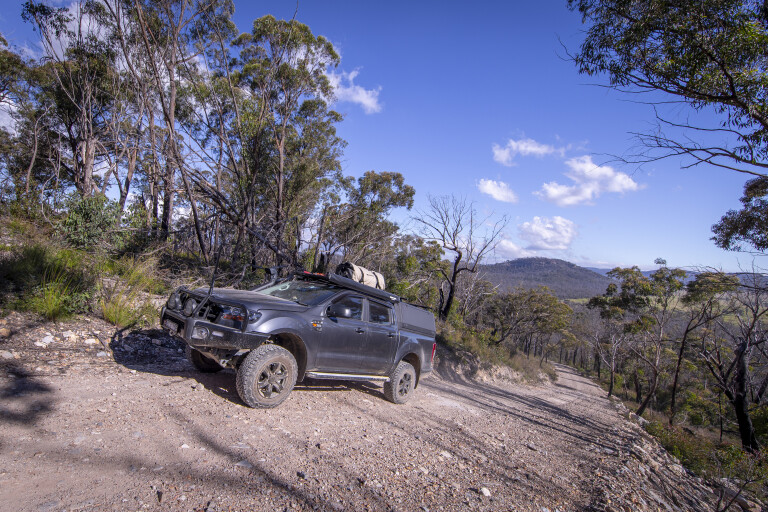
If your ascent was interrupted because you ran out of traction or ground clearance, and if it is safe to do so, sometimes the best way to make it over a difficult section of track is to back up a bit and have another go at it. If this is not an option, or you don’t feel safe doing so, it could be time to drag out the recovery equipment.
If a vehicle in front can safely back down to where you are, a snatch recovery might get you over the immediate obstacle, or if you have a winch and there is a handy anchor point, winching might be the best course of action. Sometimes you might just need to do a bit of track building by placing some rocks under the wheels or use a set of recovery boards to get out of your predicament. Whatever you do, take your time, and make a considered decision rather than rushing in to it.
Don’t forget to let the rest of the convoy know when you’re on the move again, and advise following vehicles what obstacle is ahead of them and the best way to manage it, so they will have a better chance of getting through without becoming stuck.
Once you’ve made it to the top of a steep hill climb, alert other vehicles in the convoy that it’s safe for them to proceed, and make sure you leave them enough space to safely stop once they have completed the ascent.
Once at the summit, grab your camera and start taking photos of the spectacular vista before you. And keep an eye out for our guide to safely descending steep hills in an upcoming issue.
Gear you'll need
Whenever you drive your vehicle off-road, you should always carry appropriate recovery gear. For steep hill climbs a winch is always handy, and it should be complemented with a winch extension strap, tree trunk protector, snatch blocks and shackles. Other handy recovery gear includes a snatch strap, long-handle shovel and recovery boards … and always wear gloves when using recovery equipment.
Your vehicle will need to be fitted with suitable recovery points front and rear. If you are tackling difficult terrain, Light Truck (LT) tyres with either an all-terrain or mud-terrain tread pattern will improve capability, as will a suspension lift. Under-vehicle protection is also a sound investment.
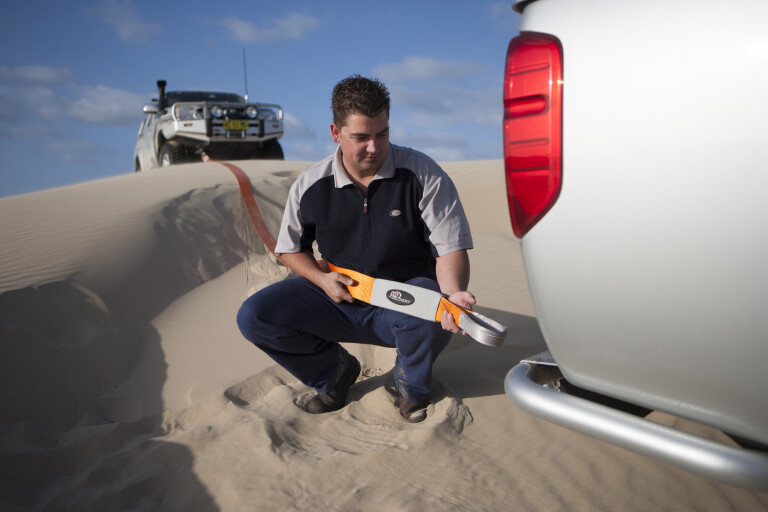
Spotter
On any difficult section of track, it pays to have a ‘spotter’ on the outside of the vehicle who can direct the driver and help out if any track building is required.
Clear and concise communication is key to a good driver/spotter relationship, whether that be via UHF radio, hand signals or a combination of both. When it comes to hand signals, ensure both the driver and spotter are on the same page and keep signals as simple as possible, such as using hands to indicate steering angle, whether to stop or whether to inch forwards.
Before placing rocks under wheels, or setting up any recovery equipment, make sure the driver knows what is going on and that the vehicle is stationary with the brakes on.
DOs
- Know your vehicle and how to best to use it.
- Understand the terrain ahead of you.
- Use momentum to your advantage.
- Lower tyre pressures to suit the terrain.
- Carry recovery equipment and comms gear.
DONTs
- Traverse sideways across steep tracks.
- Drive until preceding vehicles have cleared the track.
- Stop without alerting other vehicles.
- Floor it in low-range first and spin wheels.
- Rush decisions if you get stuck.

COMMENTS